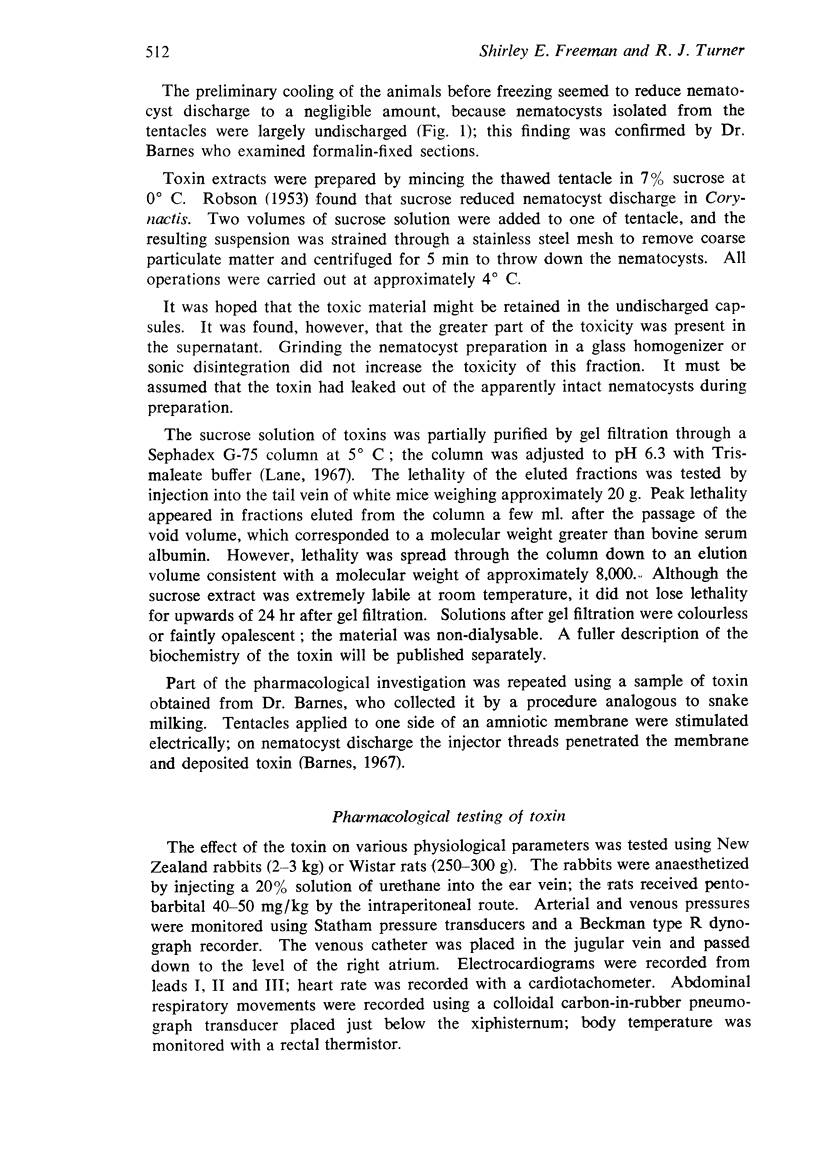Abstract
1. A study has been made of the pharmacological actions of toxic preparations obtained from the box jellyfish Chironex fleckeri Southcott. Two toxin preparations were used. One was a tentacle extract which was partially purified by Sephadex gel filtration; the second was obtained by a process analogous to snake milking, and is probably similar in composition to the material injected into victims.
2. All preparations were extremely toxic; death in animals, following minimally lethal doses, occurred in minutes. Respiratory arrest of central origin appeared to be the terminal event in all species tested. This was accompanied by marked signs of cardiotoxicity. The heart was slowed, irregular, and showed varying degrees of conduction delay. Terminally it showed atrioventricular block.
3. Blood pressure changes were biphasic. An initial rise in carotid pressure was followed by a profound fall; a second rise to an above normal level frequently followed this. These blood pressure oscillations were damped down by prior treatment with hexamethonium but the hypertensive response remained.
4. Blood samples taken before terminal apnoea showed a variable degree of haemolysis and a raised K+ level.
5. Experiments with isolated organ preparations suggested that the toxin had a non-specific lytic effect on cells, but did not contain pharmacologically active substances of small molecular weight such as 5-hydroxytryptamine.
6. It is suggested that the toxin(s) act by altering membrane permeability; the signs at death may reflect the sensitivity of the target organs to such a change.
Full text
PDF










Images in this article
Selected References
These references are in PubMed. This may not be the complete list of references from this article.
- Halpern B. N., Rahman S. Studies on the cardiotoxicity of streptolysin O. Br J Pharmacol Chemother. 1968 Mar;32(3):441–452. doi: 10.1111/j.1476-5381.1968.tb00445.x. [DOI] [PMC free article] [PubMed] [Google Scholar]
- JAMIESON D. A method for the quantitative estimation of drugs on the isolated intact trachea. Br J Pharmacol Chemother. 1962 Oct;19:286–294. doi: 10.1111/j.1476-5381.1962.tb01190.x. [DOI] [PMC free article] [PubMed] [Google Scholar]
- Lane C. E. Pharmacologic action of Physalia toxin. Fed Proc. 1967 Jul-Aug;26(4):1225–1226. [PubMed] [Google Scholar]
- ROCHA E SILVA M., ROSENTHAL S. R. Release of pharmacologically active substances from the rat skin in vivo following thermal injury. J Pharmacol Exp Ther. 1961 Apr;132:110–116. [PubMed] [Google Scholar]
- ROTHSCHILD A. M. Effect of catecholamines and their chloroanalogs on the in vitro release of histamine from cells of rat peritoneal fluid. Biochem Pharmacol. 1962 Oct;11:979–980. doi: 10.1016/0006-2952(62)90152-1. [DOI] [PubMed] [Google Scholar]
- Wolff J., Salabè H., Ambrose M., Larsen P. R. The basic proteins of cobra venom. II. Mechanism of action of cobramine B on thyroid tissue. J Biol Chem. 1968 Mar 25;243(6):1290–1296. [PubMed] [Google Scholar]



